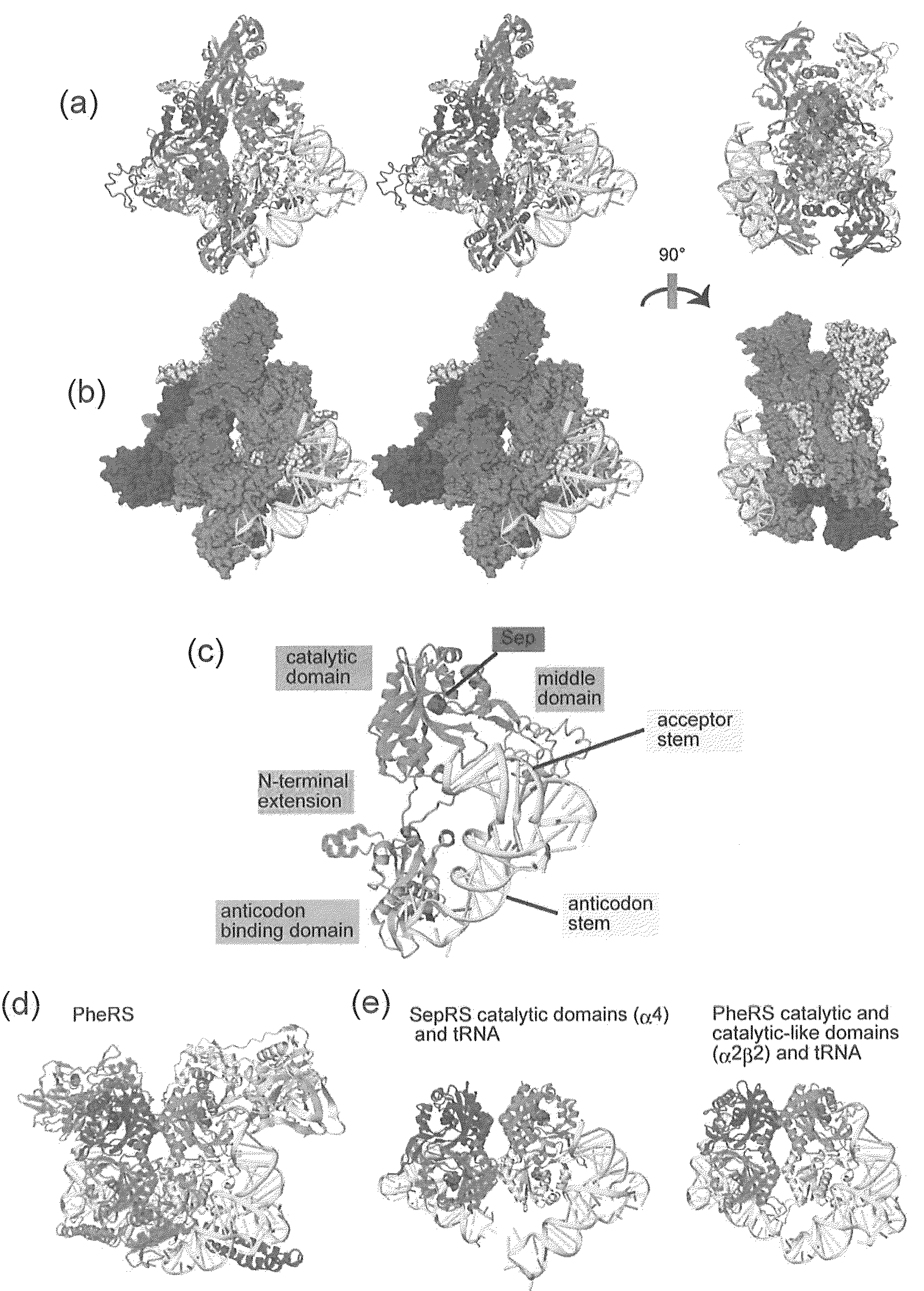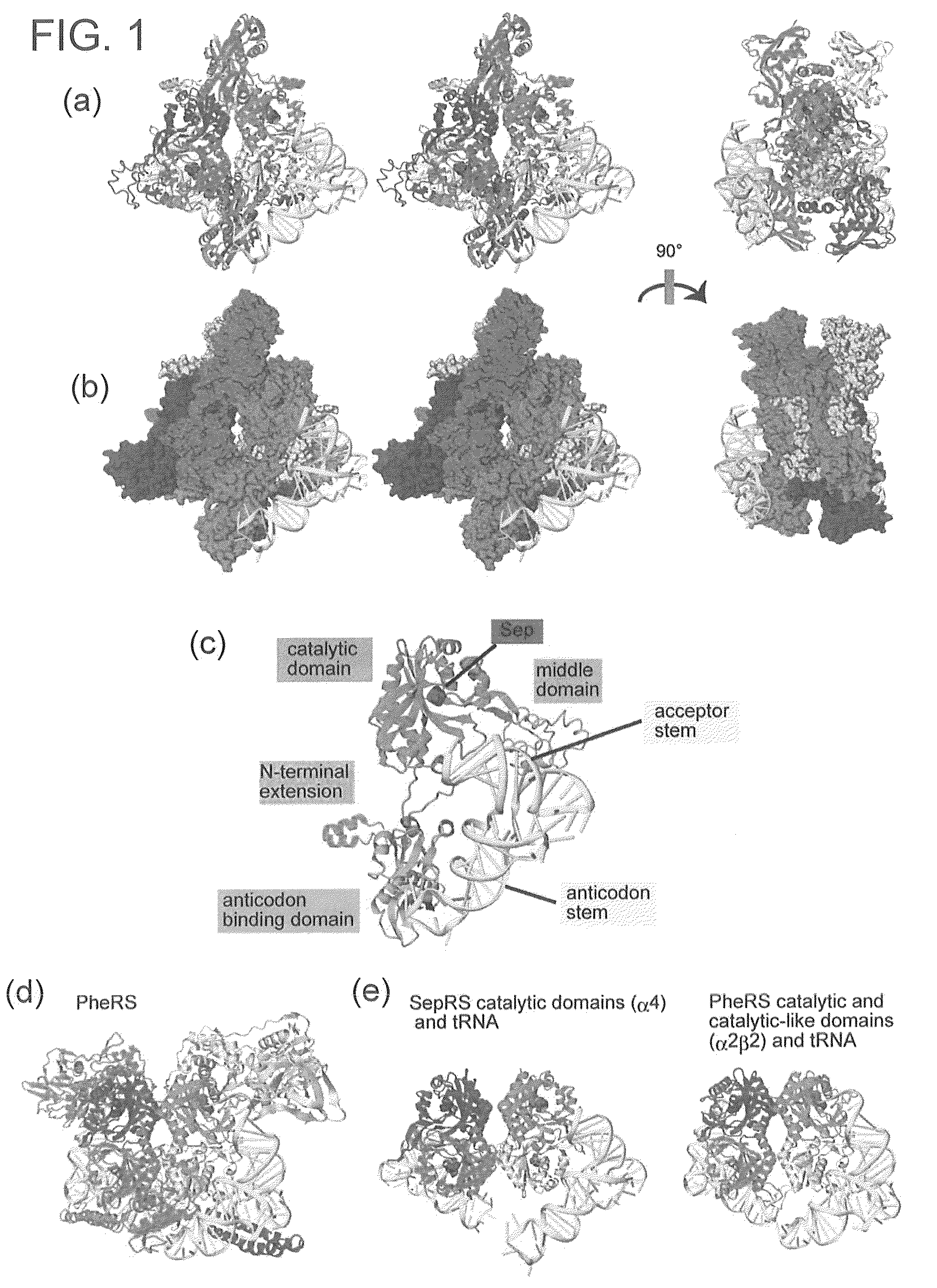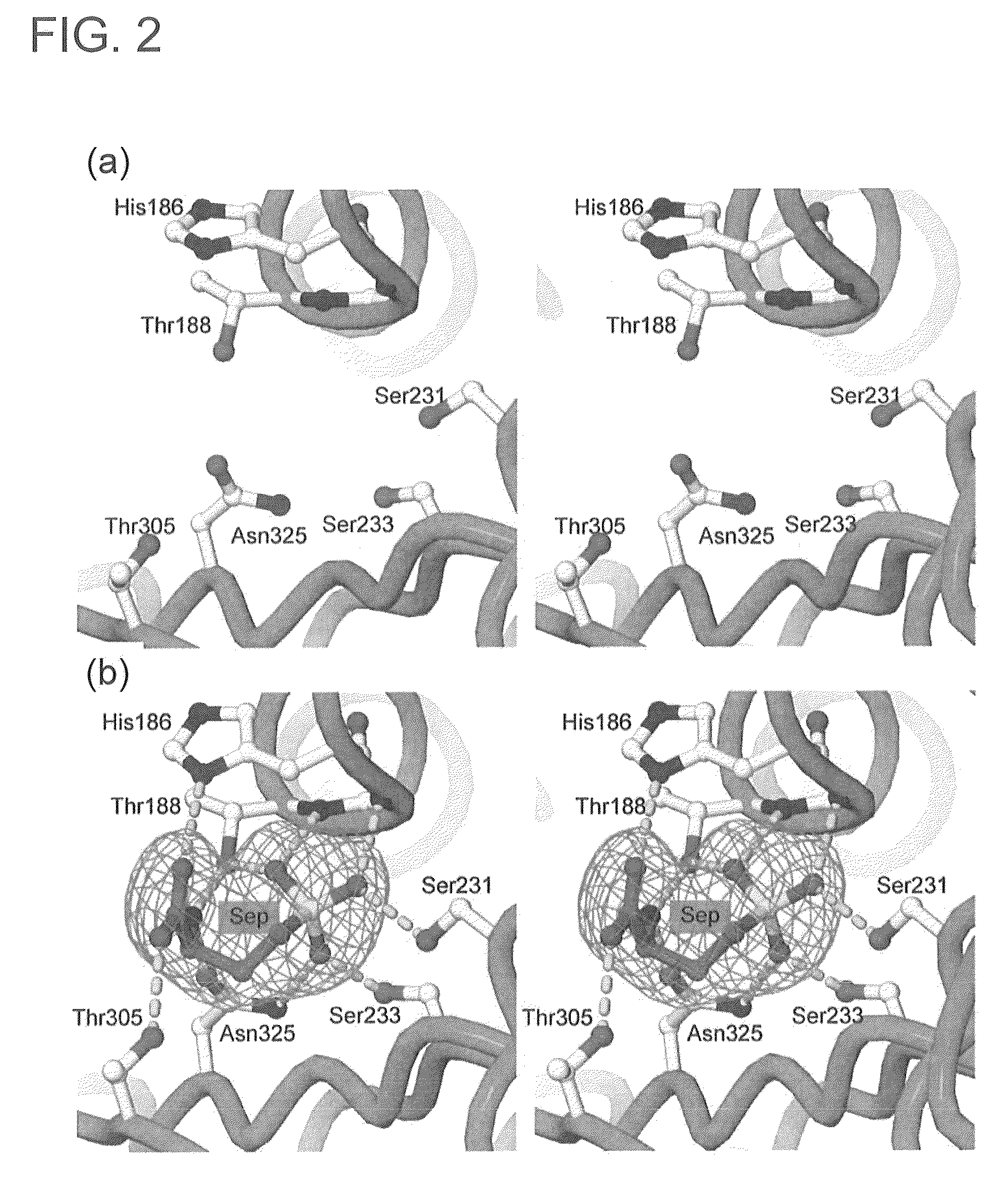Mutant SepRS, and method for site-specific introduction of phosphoserine into protein using the same
a technology of phosphoserine and sepr, which is applied in the field of mutation phosphoseryltrna synthetase, can solve the problems of difficult design of modified aars capable of recognizing phosphoserine, and no precedent in which this amino acid is successfully achieved, and achieve the effect of enhanced binding affinity with the suppressor trna
- Summary
- Abstract
- Description
- Claims
- Application Information
AI Technical Summary
Benefits of technology
Problems solved by technology
Method used
Image
Examples
examples
1. Method
[0050][Preparation of Protein and tRNA]
[0051]A full-length SepRS gene derived from a thermophilic sulfur bacterium (Archaeoglobus fulgidus) was cloned into a plasmid pET26b (Novagen) utilizing restriction enzyme cleavage sites NdeI and SalI. The introduction of mutation was carried out employing a PCR method. Wild type and mutant enzymes were each excessively expressed using an E. coli BL21 codon plus (DE3) strain (Stratagene). A SepRS protein was thermally treated at 80° C. for 30 minutes and purified by means of column chromatography using Q-Sepharose FF (GE Healthcare) and unoQ (Bio-Rad). The purified enzyme was dialyzed against a Tris hydrochloride buffer (pH 8.0) containing 5 mM of magnesium chloride, 150 mM of sodium hydrochloride and 5 mM of β-mercaptoethanol and concentrated to about 9 mg / mL. A selenomethionine-labeled protein was excessively expressed using an E. coli B834 codon plus (DE3) strain and purified in the same method as in the naturally occurring enzyme....
PUM
| Property | Measurement | Unit |
|---|---|---|
| pH | aaaaa | aaaaa |
| concentration | aaaaa | aaaaa |
| pH | aaaaa | aaaaa |
Abstract
Description
Claims
Application Information
 Login to View More
Login to View More - R&D
- Intellectual Property
- Life Sciences
- Materials
- Tech Scout
- Unparalleled Data Quality
- Higher Quality Content
- 60% Fewer Hallucinations
Browse by: Latest US Patents, China's latest patents, Technical Efficacy Thesaurus, Application Domain, Technology Topic, Popular Technical Reports.
© 2025 PatSnap. All rights reserved.Legal|Privacy policy|Modern Slavery Act Transparency Statement|Sitemap|About US| Contact US: help@patsnap.com



